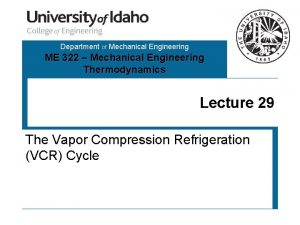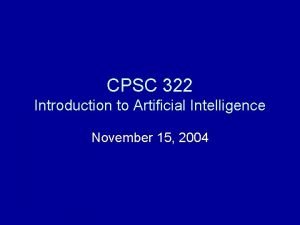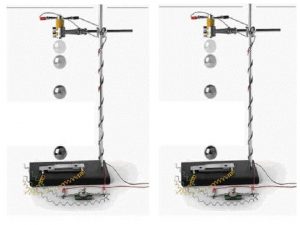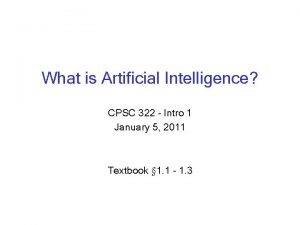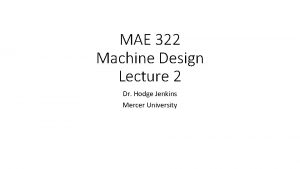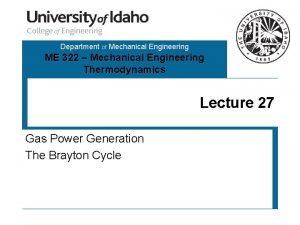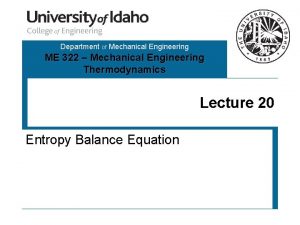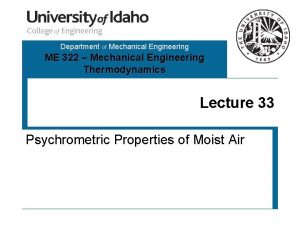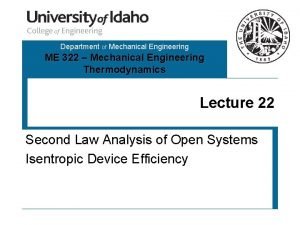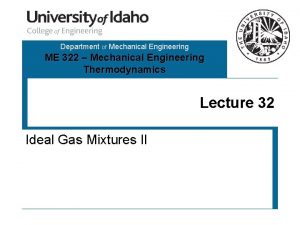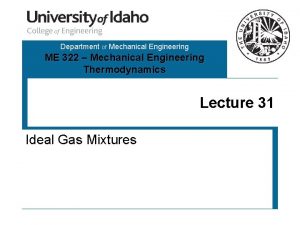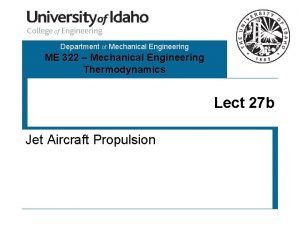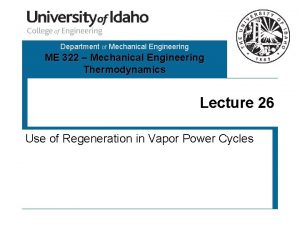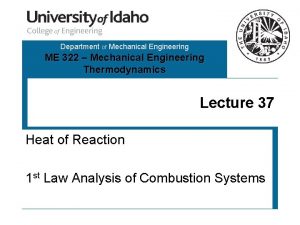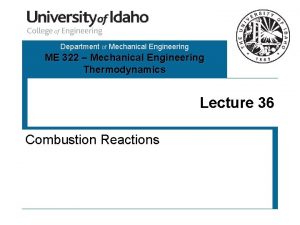Department of Mechanical Engineering ME 322 Mechanical Engineering












- Slides: 12

Department of Mechanical Engineering ME 322 – Mechanical Engineering Thermodynamics Lecture 19 Calculation of Entropy Changes

The Gibbs Equations How are entropy values calculated? Clausius found that, While this is correct, it is not very easily done! We need to develop an alternate method. Consider a closed simple compressible system undergoing a reversible process with negligible kinetic and potential changes. For this system, The First Law The Second Law 2

The Gibbs Equations Since the system is a simple compressible system, Substituting the Second Law into the First Law and writing the work term as above gives, Dividing through by the mass of the system and rearranging gives, The First Gibbs Equation 3

The Gibbs Equations A second Gibbs equation can be derived that involves enthalpy, Substituting this expression into the first Gibbs equation and rearranging gives, The Second Gibbs Equation 4

Significance of the Gibbs Equations Rearranging the Gibbs Equations allows us to determine entropy changes for a substance. . . These equations are much easier to use to find entropy changes. These equations can now be used with any of the fluid property models we have previously discussed. 5

The Real Fluid Model These equations must be integrated between the two states. The calculus is complex and beyond the scope of ME 322 The good news is that the results are tabulated in property tables or they can be determined from software such as EES 6

Real Fluid Model – Reference States How can the reference state be arbitrary? (Bunch Of Calculus) Now consider the difference between two table values. . . The datum state is arbitrary! 7

Real Fluid Model – Reference States Example: R 22 at two states as shown below. . . 8

Incompressible Substance Model For the incompressible substance, recall that Then, Furthermore, if the heat capacity can be assumed constant, Notice that the entropy of an incompressible substance is only a function of temperature. 9

The Ideal Gas Model For the ideal gas, recall that Then from the First Gibbs Equation, Furthermore, if the heat capacity can be assumed constant, Notice that the entropy of an ideal gas is a function of both temperature and specific volume (or pressure). 10

The Ideal Gas Model For the ideal gas, recall that Then from the Second Gibbs Equation, Furthermore, if the heat capacity can be assumed constant, Notice that the entropy of an ideal gas is a function of both temperature and pressure. 11

Variable Heat Capacities Options to include the effects of variable heat capacity … 1. Integrate the ideal gas heat capacity equation found in Table C. 14. 2. Use a constant specific heat evaluated at the average temperature of the process. 3. Make it EESier by having someone else do the calculus for you. 12

